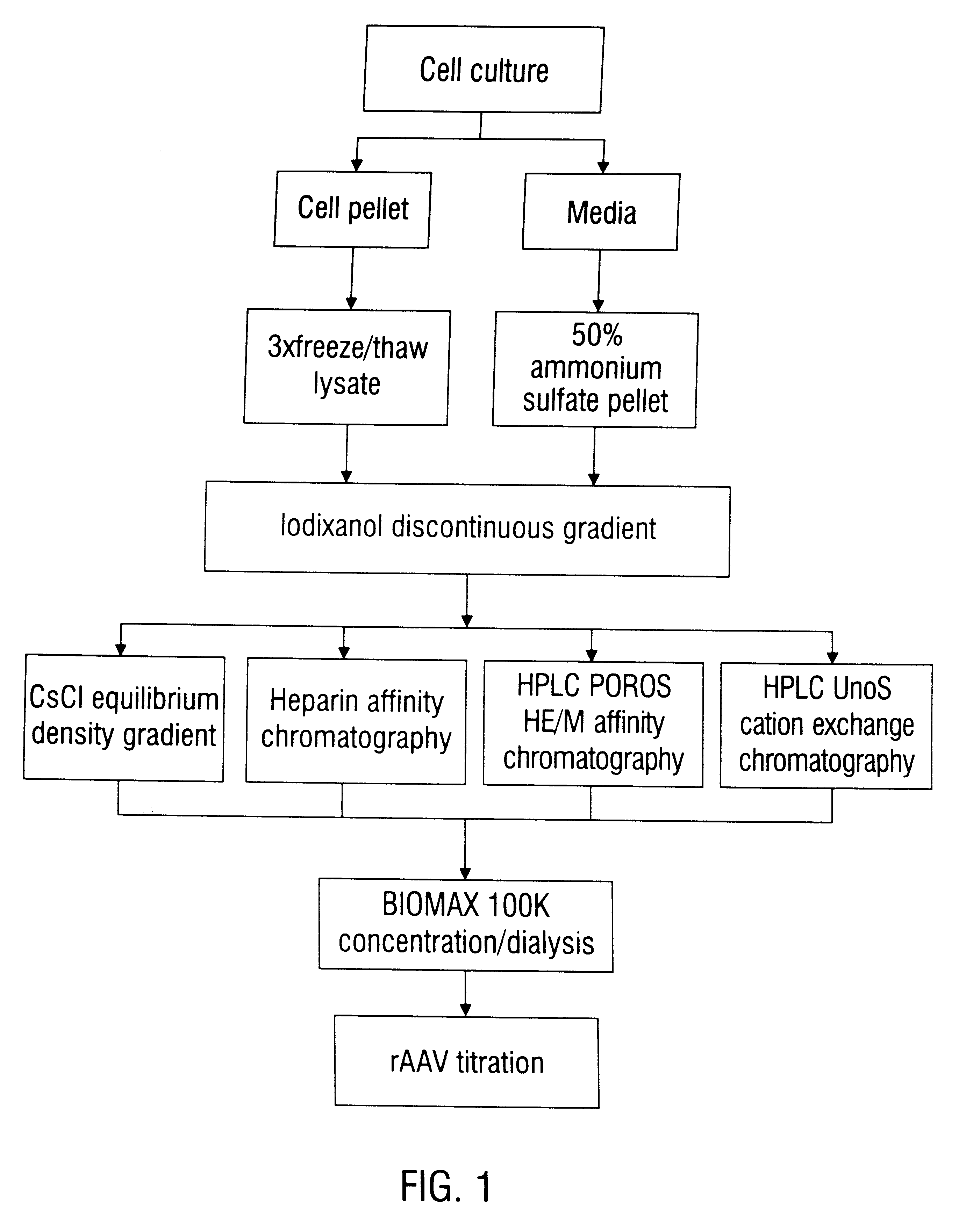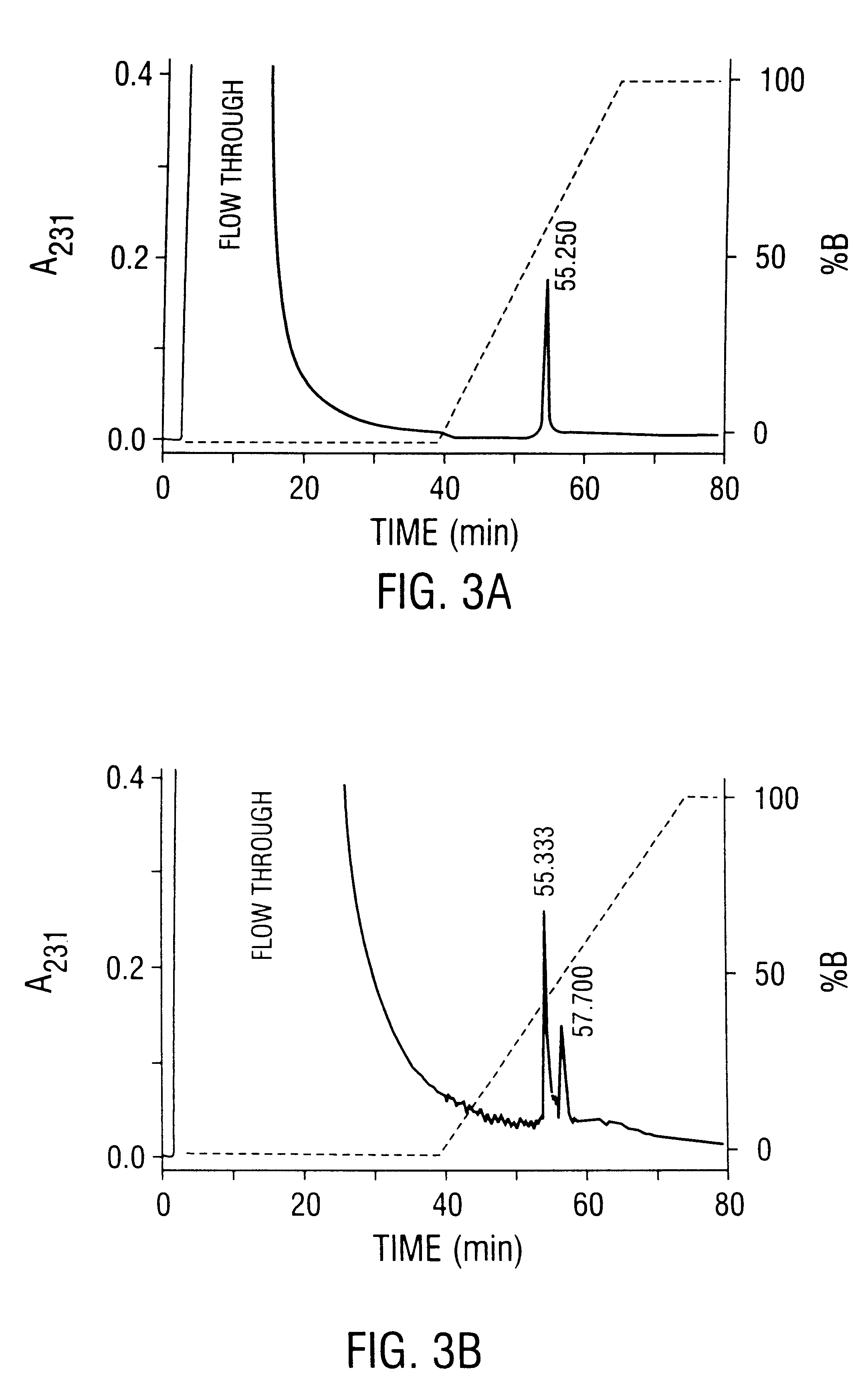Method of preparing recombinant adeno-associated virus compositions
a technology of adenovirus and composition, which is applied in the field of purifying a recombinant adenovirus, can solve the problems of unnecessary or unwarranted presence of salt in other steps, and achieve the effect of reducing the concentration of adenovirus
- Summary
- Abstract
- Description
- Claims
- Application Information
AI Technical Summary
Benefits of technology
Problems solved by technology
Method used
Image
Examples
example 1
5.1 Example 1
Methods for Production of rAAV Compositions
5.1.1 Materials and Methods
5.1.1.1 Cells
Low passage number (P29-35) 293 cells were propagated in DMEM / 10% FBS. The C12 cell line (Clark et al., 1995) was maintained in the presence of 0.5 mg / ml G418, while the Cre8 cell line (Hardy et al., 1997) was propagated in DMEM supplemented with 200 .mu.g / ml G418.
5.1.1.2 Construction of Recombinant Plasmids
The construction of pTR-UF5 was described earlier (Klein, 1998). To produce the vector containing the enhanced blue fluorescent mutant of green fluorescent protein (gfp; Heim and Tsien, 1996), the inventors have introduced the Tyr-145-Phe mutation into pTR-UFB background (Zolotukhin et al., 1996) using Quick Change site-Directed Mutagenesis kit (Stratagene, La Jolla, Calif.). The resulting plasmid was termed pTR-UF6. To construct the rAd-UF7 vector, the inventors substituted the rAAV cassette from pTR-UF5 for the CMV promoter fragment in pAdlox (Hardy et al., 1997). The infectious rAd-...
PUM
| Property | Measurement | Unit |
|---|---|---|
| Fraction | aaaaa | aaaaa |
| Fraction | aaaaa | aaaaa |
| Fraction | aaaaa | aaaaa |
Abstract
Description
Claims
Application Information
 Login to View More
Login to View More - R&D
- Intellectual Property
- Life Sciences
- Materials
- Tech Scout
- Unparalleled Data Quality
- Higher Quality Content
- 60% Fewer Hallucinations
Browse by: Latest US Patents, China's latest patents, Technical Efficacy Thesaurus, Application Domain, Technology Topic, Popular Technical Reports.
© 2025 PatSnap. All rights reserved.Legal|Privacy policy|Modern Slavery Act Transparency Statement|Sitemap|About US| Contact US: help@patsnap.com



